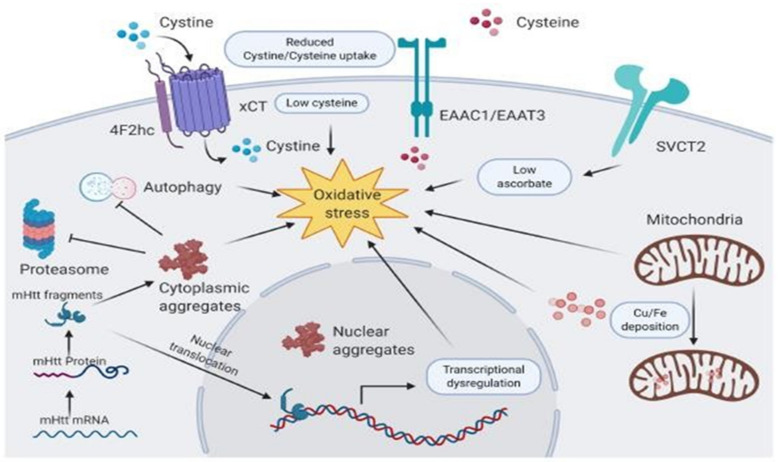Figure 4.
Etiology of oxidative stress behind Huntington’s disease (HD). In HD, reduced levels of ascorbate, cysteine, and antioxidants are observed. Excitatory amino acid transporter 3 (EAAT3/EAAC1) is the cysteine transporter, which is dysregulated and responsible for the reduced uptake of cysteine. Uptake of the oxidized form of cysteine is also reduced, which is mediated through the xCT and 4F2hc complex transporter. Sodium-dependent vitamin C transporters 2 (SVCT2)-mediated uptake of ascorbate (vitamin C), which is also reduced in HD, is responsible for the compromised antioxidant defense system in neurons. Cellular components are damaged because of metal deposition such as iron (Fe) and copper (Cu) in both cytoplasms and mitochondria, generating free radicals. Additional oxidative stress generates the mutant form of huntingtin aggregates (mHtt) in both the cytoplasm and nucleus. mHtt aggregates affect vital cellular processes such as mitochondrial dysfunction, proteostasis, and autophagy. In the nucleus, mHtt affects transcription factors involved in the cell’s antioxidant defense system. mHtt also affects DNA repair processes, which are responsible for damage and the error-prone repair system. Ascorbate (vitamin C) supplementation in HD improves the antioxidant defense system and prevents disease progression.

